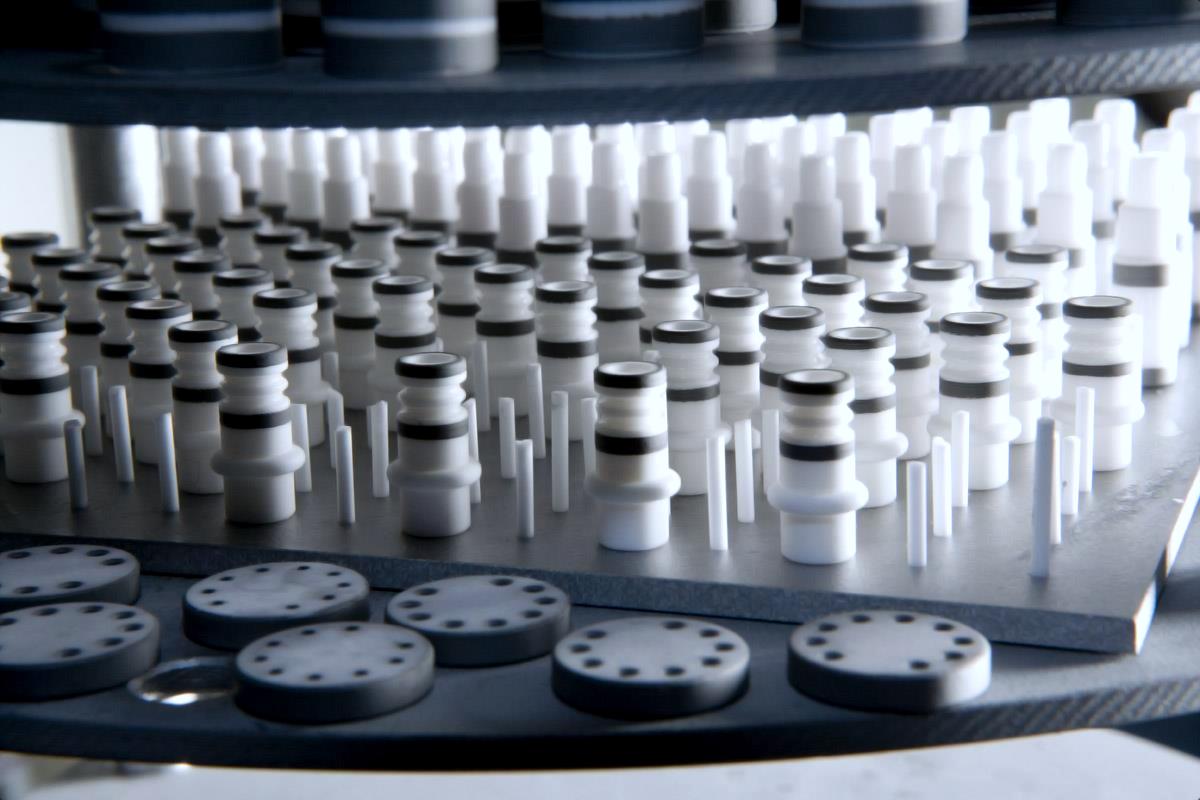Manufacturing Processes
Metalizing
 SST specializes in thick-film metallization of alumina ceramics. The most common method used is a refractory metal process using molybdenum as a sintered metal base layer on the ceramic. The wide selection of molybdenum-based coatings, along with the stringent furnace operating parameters, ensures good bond strength and reliability with a wide range of alumina body compositions. SST provides electroless nickel plating (boron type) over the molybdenum metalizing to achieve a highly “wettable” surface. In addition, SST will provide other thick-film coatings that may be required by our customers.
SST specializes in thick-film metallization of alumina ceramics. The most common method used is a refractory metal process using molybdenum as a sintered metal base layer on the ceramic. The wide selection of molybdenum-based coatings, along with the stringent furnace operating parameters, ensures good bond strength and reliability with a wide range of alumina body compositions. SST provides electroless nickel plating (boron type) over the molybdenum metalizing to achieve a highly “wettable” surface. In addition, SST will provide other thick-film coatings that may be required by our customers.
Brazing
SST uses a variety of furnaces enabling high-temperature brazing in hydrogen, nitrogen, vacuum, and partial pressure atmospheres. Brazing filler metals used by SST contain no high vapor pressure materials and are optimized for the base metal or ceramic that is being brazed. Filler metals used at SST include precious metals, copper, and high-nickel alloys with melting ranges from 700°C to 1300°C. This broad temperature capability allows for flexibility in "step brazing" when a complex assembly requires multiple braze joints.
Active Metal Brazing
The active metal brazing process is a one-step brazing process used to join ceramics to metal. The term "active metal" typically refers to a small percentage of titanium or zirconium added to the brazing filler metal or directly applied to the ceramic. When processed in a vacuum furnace, the active metal will form a reaction layer on the ceramic which is readily wetted by the filler metal. The active braze process can provide a strong leak-tight joint and is ideally suited for sealing to sapphire, large ceramic-to-metal assemblies, and non-oxide ceramics.
Glass-Ceramic Sealing
Glass-ceramic sealing refers to a special type of glass-to-metal sealing whereby the amorphous glass material is crystallized through a subsequent heat treatment. The resulting material is primarily crystalline in nature and takes on similar properties to ceramic. SST utilizes high-temperature glass-ceramic materials (aluminosilicates) suitable for environments including high vacuum, high pressure, high thermal expansion, and broad temperature ranges from cryogenic to 400°C bake out. The glass-ceramic sealing system is ideal for sealing to high-expansion metals such as 304/316 stainless steel. The glass-ceramic process provides SST with a competitive advantage when designing and producing coaxial connectors and high-density feedthroughs. Most parts can be directly sealed into a flange mount or provided for TIG weld installation.
TIG Welding, Laser Welding, Spot Welding, Machining, and Mechanical Assembly
SST provides high-level assembly services including:
- Precision TIG welding with the latest pulsed, inverter controls
- Spot welding for attaching contacts, tabs, and thermocouple connections
- In-house machine shop providing prototype components and machined assemblies
- Other mechanical assembly techniques for specialty connectors, cables, and small chamber
- Laser Welding enables SST to weld small parts and assemblies susceptible to thermal shock.